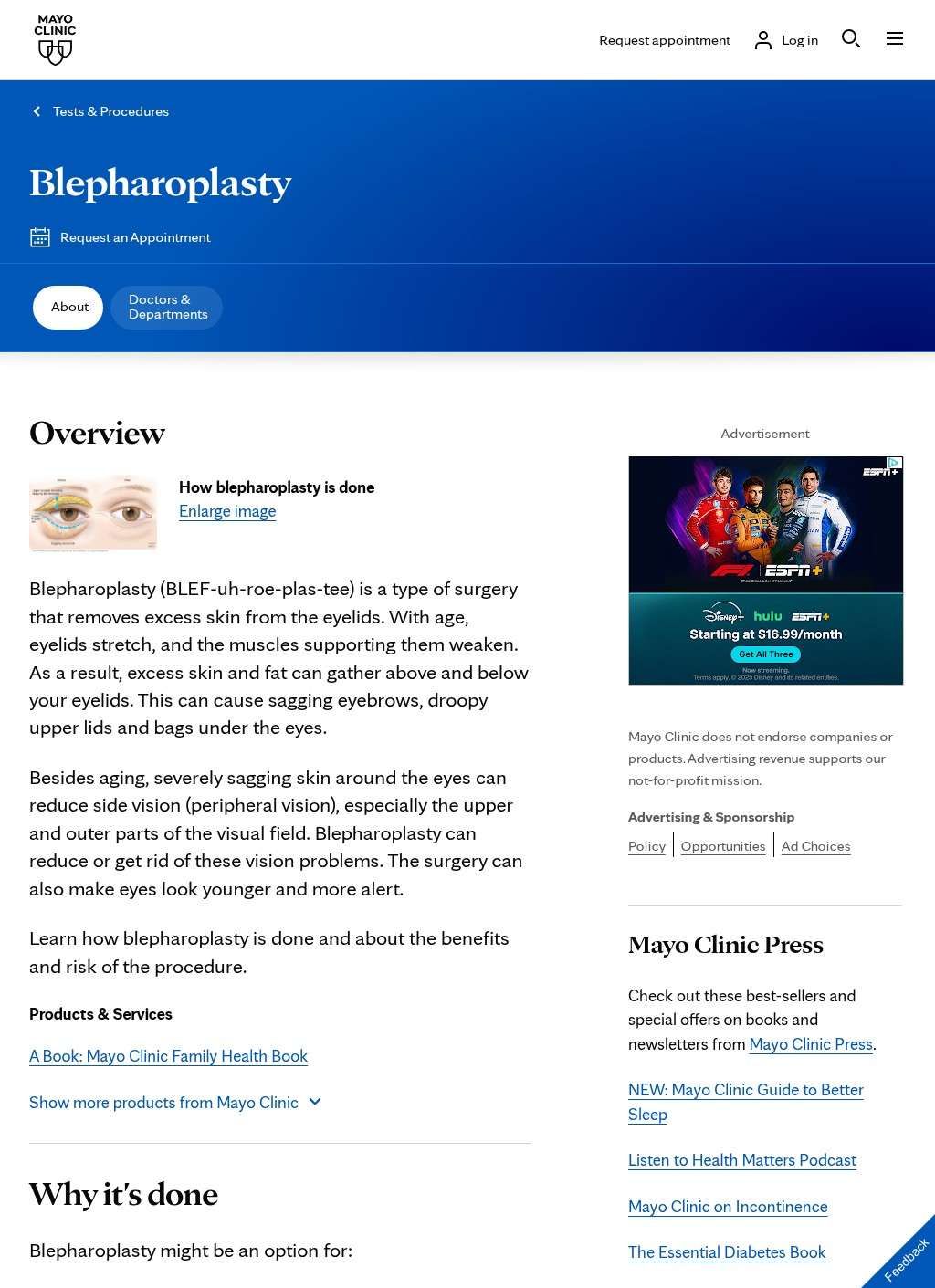Mayo Clinic represents one of America's most trusted medical institutions for patient education and surgical excellence, offering comprehensive resources on blepharoplasty that combine medical expertise with accessible patient communication. As a nonprofit academic medical center consistently ranked among the nation's best hospitals, Mayo Clinic's approach to eyelid surgery emphasizes evidence-based practices, multidisciplinary collaboration, and patient-centered care. Their extensive experience performing thousands of eyelid procedures annually across multiple campuses provides unique insights into optimizing surgical outcomes while minimizing risks for diverse patient populations seeking functional or cosmetic eyelid enhancement.
The institution's patient education materials on blepharoplasty reflect Mayo Clinic's commitment to empowering individuals with knowledge needed for informed decision-making. Detailed explanations cover why people seek eyelid surgery, from cosmetic concerns about aging appearance to functional issues where excess upper eyelid skin obstructs peripheral vision. Clear descriptions of surgical techniques help patients understand what happens during upper and lower blepharoplasty procedures, including incision placement, tissue removal or repositioning, and wound closure methods. Visual aids and anatomical illustrations clarify complex concepts without overwhelming readers with medical jargon. This educational approach helps patients develop realistic expectations and actively participate in their surgical planning.
Pre-operative evaluation protocols at Mayo Clinic exemplify the comprehensive assessment necessary for safe, successful eyelid surgery outcomes. Their guidelines detail essential examinations including visual field testing to document functional impairment, tear production measurement to assess dry eye risk, and photographic documentation for surgical planning and insurance purposes. Medical history reviews identify factors that might increase surgical risks or compromise healing, such as thyroid eye disease, bleeding disorders, or previous facial surgeries. Medication assessments ensure proper management of blood thinners and supplements that could increase bruising. This systematic approach to patient evaluation minimizes surprises during surgery and optimizes conditions for excellent results.
Surgical expertise at Mayo Clinic encompasses the full spectrum of eyelid procedures, from straightforward skin excision to complex reconstructions addressing multiple anatomical abnormalities. Their surgeons' training in both ophthalmology and plastic surgery provides comprehensive understanding of periocular anatomy and aesthetic principles. Technical refinements developed through high surgical volumes include precise fat sculpting techniques that avoid hollowness, muscle-sparing approaches that preserve natural expression, and meticulous wound closure methods that minimize scarring. The institution's commitment to education means these advanced techniques are shared through publications and training programs, elevating standards of care beyond Mayo Clinic's walls.
Risk communication represents a crucial aspect of Mayo Clinic's patient-centered approach to eyelid surgery. Their materials provide honest discussions of potential complications ranging from minor issues like temporary blurred vision and bruising to rare but serious problems such as bleeding behind the eye or permanent vision changes. Statistics help patients understand the likelihood of various outcomes based on large patient populations. Specific risk factors that might increase complication rates receive detailed attention, enabling patients to make truly informed decisions. This transparency about surgical risks, combined with Mayo Clinic's excellent safety record, helps patients proceed with confidence when choosing to undergo blepharoplasty.
Recovery guidance from Mayo Clinic provides day-by-day expectations that help patients navigate the post-operative period successfully. Immediate post-operative care instructions cover cold compress application, head elevation, and activity restrictions that promote healing while minimizing swelling and bruising. Detailed timelines indicate when patients typically return to various activities, from reading and computer work to exercise and social engagements. Warning signs requiring immediate medical attention are clearly distinguished from normal healing variations. Long-term care recommendations address scar maturation, sun protection, and when final results become apparent. This comprehensive recovery support helps patients achieve optimal outcomes while avoiding complications from premature activity resumption.
The multidisciplinary approach at Mayo Clinic brings together specialists from ophthalmology, plastic surgery, dermatology, and other fields to address complex eyelid concerns comprehensively. Patients with thyroid eye disease might see endocrinologists and oculoplastic surgeons working collaboratively to optimize medical management before considering surgery. Those with significant facial aging might benefit from coordinated procedures addressing brows, eyelids, and mid-face simultaneously. This team approach ensures patients receive integrated care that addresses all their concerns rather than isolated procedures that might not achieve desired overall results. Access to multiple specialties within one institution streamlines care delivery while maintaining consistent quality standards.
Quality outcomes at Mayo Clinic reflect the institution's systematic approach to measuring and improving surgical results through ongoing research and quality improvement initiatives. Their participation in national databases enables benchmarking against other top medical centers while identifying opportunities for enhancement. Patient-reported outcome measures capture satisfaction with both functional improvements and aesthetic results. Long-term follow-up studies document the durability of surgical results and factors associated with optimal outcomes. This commitment to tracking and improving quality ensures that Mayo Clinic's eyelid surgery recommendations reflect not just expert opinion but actual patient experiences. Contact resources include appointment lines for all Mayo Clinic locations, comprehensive online patient education materials, and specialized international patient services for those traveling from outside the United States seeking Mayo Clinic's expertise in eyelid surgery and other medical conditions.
